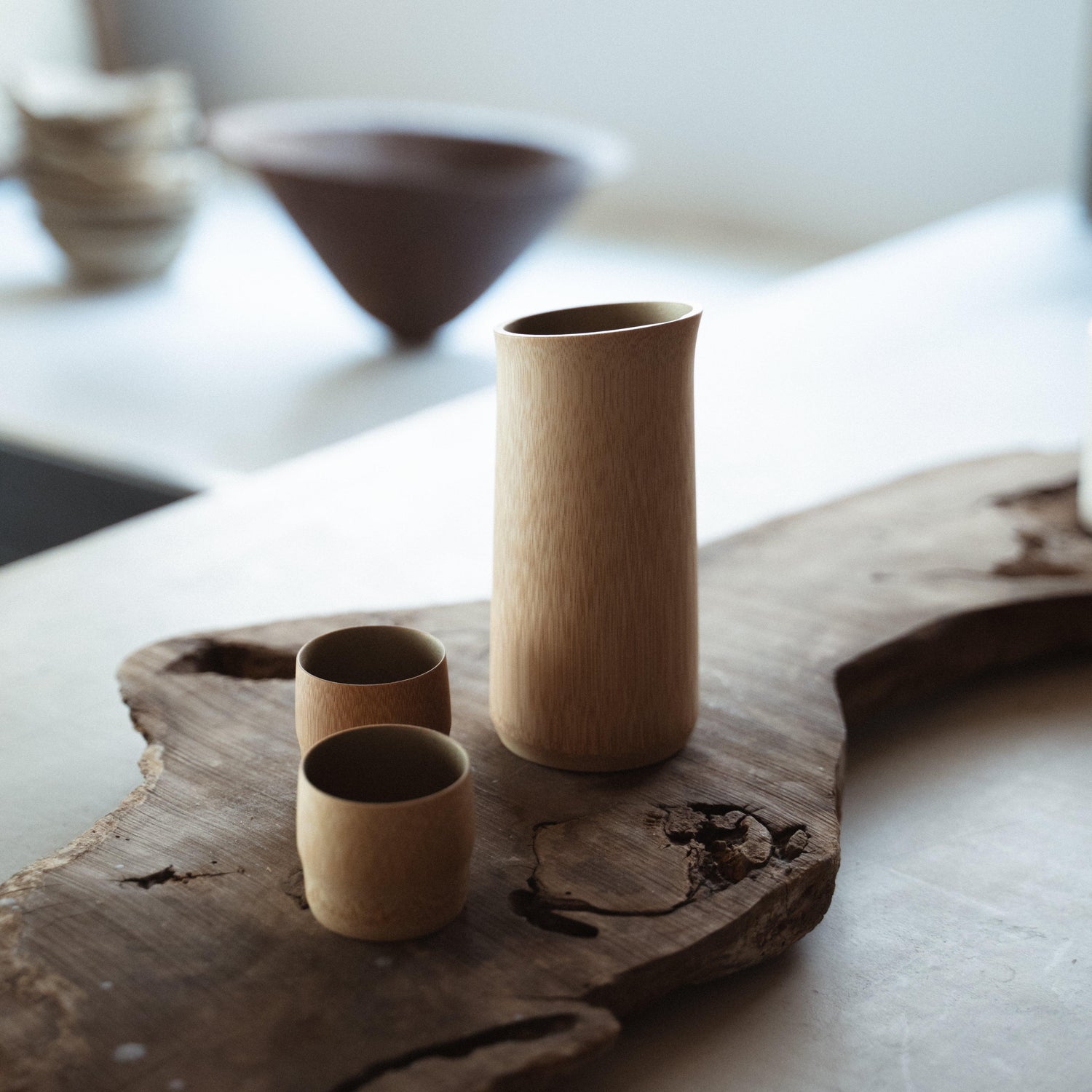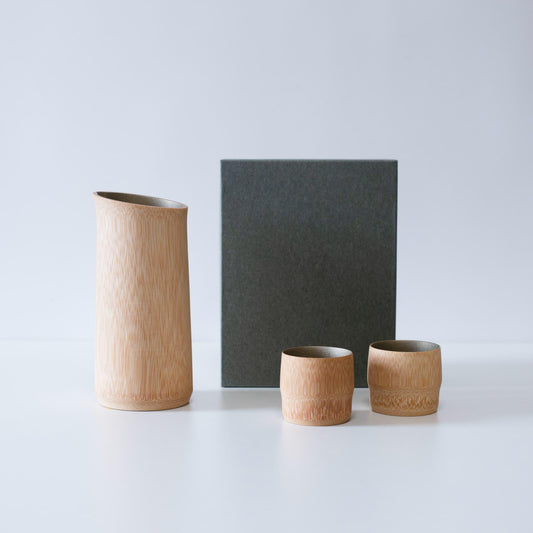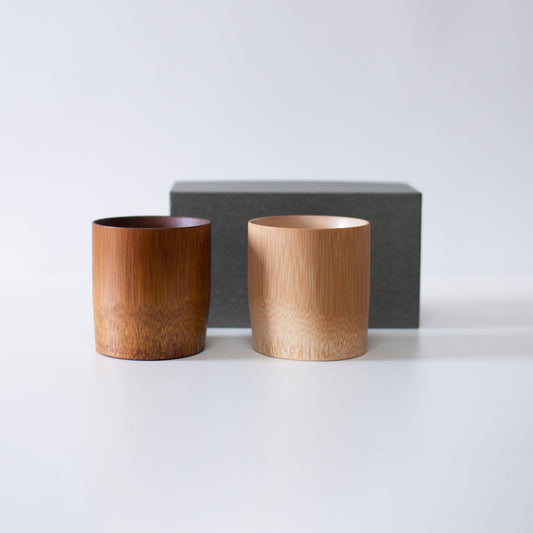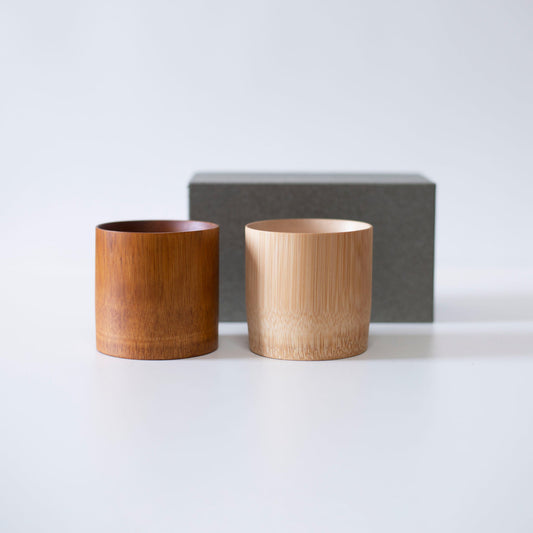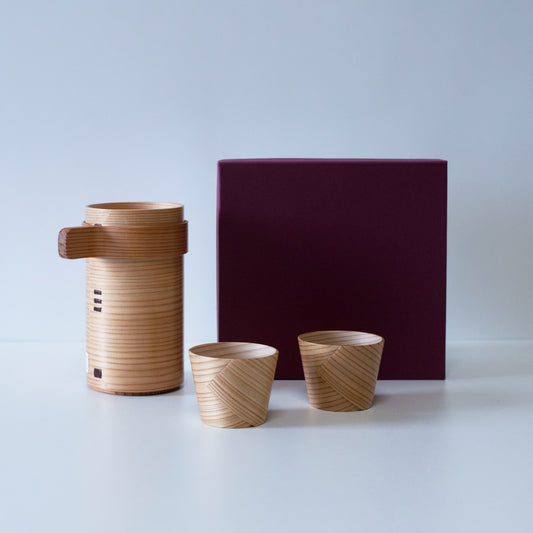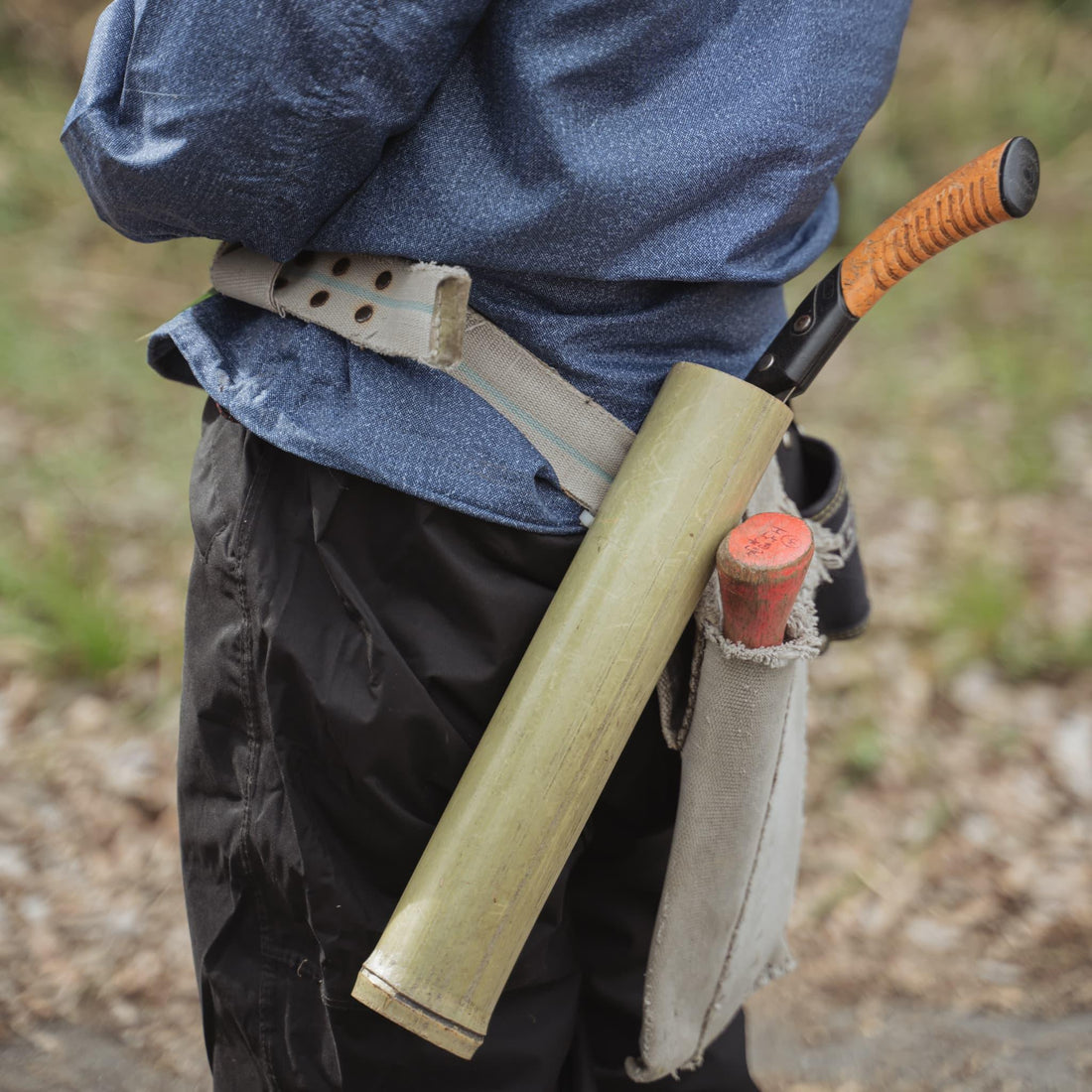
The Story of Risa Higashimae, a Bamboo Cutter Preserving Kyoto's Tradition
Share
Based in Nagaokakyo, Kyoto, Takano Chikko centers around Risa Higashimae, a member of a group of 20 artisans, continuing to protect the tradition of Japanese bamboo craftsmanship. Engaged in the production of daily necessities and tea ceremony utensils using natural bamboo, Ms. Higashimae, with 18 years of experience as a bamboo cutter, dedicates herself daily to nurturing beautiful and healthy bamboo. The bamboo selected from the forests becomes the raw material for Takano Chikko' products, transforming into bamboo craft items deeply rooted in the aesthetic consciousness of Japanese culture.
Table of contents
Bamboo Cutters and Sustainable Bamboo Forests

The role of bamboo cutters extends beyond merely cutting and selling bamboo; they significantly contribute to the sustainable management of bamboo forests. Bamboo grows quickly, sometimes extending by one meter in a single day during the peak growth season in summer. In Japan, bamboo has been used for various purposes including tea ceremony utensils, containers, flower vases, and building materials. However, with the proliferation of plastic products, the use of bamboo has declined, along with the number of bamboo cutters like Ms. Higashimae. Without bamboo cutters, there is no one to manage the bamboo forests. Unmanaged, the forests become increasingly dense, expanding their area while transforming into so-called "neglected bamboo forests," becoming breeding grounds for mosquitos and wild boars, eventually leading to damage in surrounding areas. Thus, the sustainability of the bamboo industry and a stable number of bamboo cutters to manage the forests bring significant value not only in securing raw materials for beautiful bamboo products but also for the sustainability of local communities and nature. Bamboo cutters like Ms. Higashimae, now a rare existence in Japan with only about ten remaining, play an indispensable role in the sustainability of the bamboo industry.
Bamboo Selection and Bamboo Products
The beauty of bamboo is not only in its straight growth but also in the crafted products. The process by which familiar products like chopsticks and bamboo baskets are made is not widely known. When people think of bamboo, they often envision lush, straight-growing bamboo forests. However, the appearance of bamboo as familiar products like chopsticks and baskets, white in color, is less known. Despite bamboo's rapid growth, it is less known that there is a significant time lag before harvested bamboo becomes a product. In the case of Takano Chikko, which manages its own bamboo forests and handles everything from bamboo selection and cutting to pre-processing and production, it takes 2 to 5 years for the harvested bamboo to reach a stage where it can be processed. Apart from some products made from green bamboo, the bamboo undergoes a process called "oil removal," where it is heated to wipe away the exuded oil, followed by years of drying before finally being used as material. Over the years of aging, some bamboo may split. Split bamboo is used for smaller products like chopsticks and accessories, while some bamboo remains intact indefinitely. This process requires not only time but also the skilled techniques and deep knowledge of the artisans.
Ms. Higashimae says, "I create with the thought that the bamboo I cut this year will remain for 10, 20, 100 years." The quality of the selected bamboo is crucial for bamboo products to last long, a task that falls to the craftsmen. Bamboo that withstands the test of time becomes a craft that conveys the culture and aesthetic consciousness of its era to future generations. Thus, bamboo and bamboo crafts continue to hold value over time as part of Japanese culture.
In Nagaokakyo, Kyoto, craftsmen like Risa Higashimae continue to engage with bamboo daily, ensuring the tradition and development of Japanese bamboo crafts. The bamboo products they create are not just everyday items but crafts infused with Japanese aesthetics and culture, loved by many people for years to come.





